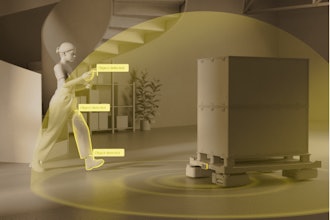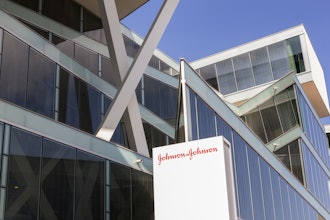
TEMPE, Ariz. — Economic activity in the manufacturing sector contracted in August for the fifth consecutive month and the 21st time in the last 22 months, say the nation's supply executives in the latest Manufacturing ISM® Report On Business.
The report was issued Tuesday by Timothy R. Fiore, CPSM, C.P.M., chair of the Institute for Supply Management Manufacturing Business Survey Committee:
"The Manufacturing PMI registered 47.2 percent in August, up 0.4 percentage point from the 46.8 percent recorded in July. The overall economy continued in expansion for the 52nd month after one month of contraction in April 2020. (A Manufacturing PMI® above 42.5 percent, over a period of time, generally indicates an expansion of the overall economy.) The New Orders Index remained in contraction territory, registering 44.6 percent, 2.8 percentage points lower than the 47.4 percent recorded in July. The August reading of the Production Index (44.8 percent) is 1.1 percentage points lower than July's figure of 45.9 percent. The Prices Index registered 54 percent, up 1.1 percentage points compared to the reading of 52.9 percent in July. The Backlog of Orders Index registered 43.6 percent, up 1.9 percentage points compared to 41.7 in July. The Employment Index registered 46 percent, up 2.6 percentage points from July's figure of 43.4 percent.
"The Supplier Deliveries Index indicated slowing deliveries, registering 50.5 percent, 2.1 percentage points lower than the 52.6 percent recorded in July. (Supplier Deliveries is the only ISM® Report On Business index that is inversed; a reading of above 50 percent indicates slower deliveries, which is typical as the economy improves and customer demand increases.) The Inventories Index registered 50.3 percent, up 5.8 percentage points compared to July's reading of 44.5 percent.
"The New Export Orders Index reading of 48.6 percent is 0.4 percentage point lower than the 49 percent registered in July. The Imports Index remained in contraction territory in August, registering 49.6 percent, 1 percentage point higher than the 48.6 percent reported in July.
"While still in contraction territory, U.S. manufacturing activity contracted slower compared to last month. Demand continues to be weak, output declined, and inputs stayed accommodative. Demand slowing was reflected by the (1) New Orders Index dropping further into contraction, (2) New Export Orders Index contracting slightly faster, (3) Backlog of Orders Index remaining in strong contraction territory, and (4) Customers' Inventories Index at the 'just right' level. (For more, see the Customers' Inventories Index summary below.) Output (measured by the Production and Employment indexes) continued in moderate contraction with production sagging further, while employment contracted slower as compared to July. Panelists' companies reduced production levels month over month as head-count reductions continued in August. Inputs — defined as supplier deliveries, inventories, prices and imports — generally continued to accommodate future demand growth, with inventory growth attributed to a supply demand timing mismatch.
"Demand remains subdued, as companies show an unwillingness to invest in capital and inventory due to current federal monetary policy and election uncertainty. Production execution was down compared to July, putting additional pressure on profitability. Suppliers continue to have capacity, with lead times improving and shortages not as severe. Sixty-five percent of manufacturing gross domestic product (GDP) contracted in August, down from 86 percent in July. The share of manufacturing sector GDP registering a composite PMI calculation at or below 45 percent (a good barometer of overall manufacturing weakness) was 33 percent in August, a 20-percentage point improvement compared to the 53 percent reported in July. Two of the six of the largest manufacturing industries — Food, Beverage & Tobacco Products; and Computer & Electronic Products — expanded in August, compared to none in July."
The five manufacturing industries reporting growth in August are: Primary Metals; Petroleum & Coal Products; Furniture & Related Products; Food, Beverage & Tobacco Products; and Computer & Electronic Products. The 12 industries reporting contraction in August — in the following order — are: Textile Mills; Printing & Related Support Activities; Nonmetallic Mineral Products; Plastics & Rubber Products; Electrical Equipment, Appliances & Components; Fabricated Metal Products; Transportation Equipment; Wood Products; Machinery; Paper Products; Chemical Products; and Miscellaneous Manufacturing.
WHAT RESPONDENTS ARE SAYING
"A noticeable slowdown in business activity. Staffing and production rationalization has been triggered. Previous optimism about future growth has been dashed." [Chemical Products]
"Backlog has dropped in half as invoicing remains strong, but orders have slowed significantly. Hoping to see orders pick back up for the fourth quarter and into 2025 but expect third quarter to remain slow for incoming orders." [Transportation Equipment]
"After a slow start and lower year-over-year sales volume during the first half of the year, we are now seeing a mild increase in year-over-year sales volume, along with more steady growth." [Food, Beverage & Tobacco Products]
"Business outlook is good. Recovery from the electronics slowdown is strong for the second half of the year." [Computer & Electronic Products]
"New order intake is sluggish at best. Interestingly, even though orders are down, inquiries are up. Customers have indicated capital has been approved for equipment purchases, but they were directed to put projects on hold until the fourth quarter of 2024. This indicates the uncertainty around the election. We anticipate a strong end of the year, with a rise in backlog going into 2025." [Machinery]
"Our order levels are on a slow, steady decline; it looks like the trend will continue through the end of the year. We are downsizing through attrition and not hiring backfills, but there have been no layoffs to date. The bright spot is a few customer programs have helped increase orders for parts, resulting in some production areas to be very busy while others have little work. Redeploying people where we can." [Fabricated Metal Products]
"New orders continue to be strong, and inventories are slightly down as a result. Supplier lead times seem to be creeping back up in certain categories." [Miscellaneous Manufacturing]
"Business is cooling down, and we don't expect a rebound until after the election is over. As we build our 2025 budget, we continue to have deep concerns about the added environmental costs on energy." [Paper Products]
"Order book remains strong for now. We are preparing for a slowdown in U.S. auto sales. We are running overtime to keep pace, as hiring hourly employees has been difficult. Some walk off the job within hours because they cannot handle factory work." [Primary Metals]
"High interest rates are curtailing consumer spending on large discretionary spending for furniture, cabinetry, flooring and decorative trim, which has affected our industry sales potential. At the same time, pent-up demand seems to be growing for housing and remodeling. Interest rate cuts may not happen soon enough to have an impact this year." [Wood Products]






















